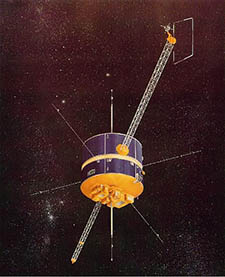
Source: NASA
The Polar spacecraft was one of four spacecraft in the Global Geospace Science (GGS) program and is also part of the ISTP program. Polar was launched on February 24, 1996 and circles Earth in a polar orbit with an apogee of 57,000 km (34,200 miles) and perigee of 11,500 km (6900 miles). The orbital period of Polar was about 16 hours. The goal of the Polar mission was to measure solar wind entry, ionospheric output, and the deposition of energy into the neutral atmosphere at high latitudes. Polar carried instruments to measure high energy particles, electric fields and magnetic fields in Earth’s magnetosphere, as well as visible, ultraviolet and X-ray imagers to observe the aurora from space.
University of Minnesota POLAR Publications
- J.R. Wygant et. al., “Polar spacecraft based comparisons of intense electric fields and Poynting flux near and within the plasma sheet-tail lobe boundary to UVI images: An energy source for the aurora”, Journal of Geophysical Research, Volume 105, Issue A8, p. 18675-18692
- Cattell, C.A. et. al., “Comparisons of Polar satellite observations of solitary wave velocities in the plasma sheet boundary and the high altitude cusp to those in the auroral zone”, Geophysical Research Letters, Volume 26, Issue 3, p. 425-428
Data
POLAR data hosted at University of Minnesota
Links
POLAR at UCB
POLAR at University of Iowa
POLAR at Goddard Space Flight Center
